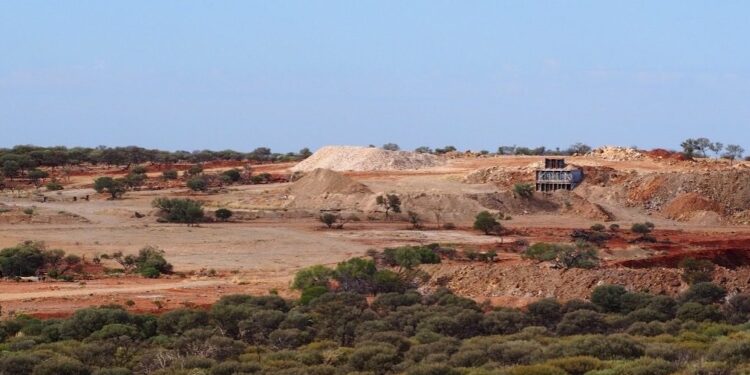Krakatoa Resources Limited (ASX: KTA) has commenced resource drilling at its 100% owned Dalgaranga critical metals project located approximately 70km from Mt Magnet, Western Australia.
The company has defined an Exploration Target, based on historical drill holes of between 1,470,000 to 3,185,000 tonneswith estimated grades of Rubidium (500-2000ppm), Lithium (50-300ppm), Niobium (100-500ppm), Tantalum (25-100ppm), Tin (50-700ppm) and Tungsten (10-100ppm).
“With buoyant prices of the project’s critical and tech metals fuelled by demand, we look forward to announcing the nature and extent of this potential maiden resource,” Krakatoa’s CEO, Mark Major, said.
The modelled pegmatite which constituted the Exploration Target has 156 historical holes (5,071m) and 11 holes (1,066m) drilled by Krakatoa in 2017. Only four elements were assayed within the historical holes. The company will expand the analysis with a focus on the rubidium, lithium, niobium, tantalum, tin and tungsten across the modelled target area.
The reverse circulation (RC) drill programme is envisaged to consist of around 3,500 metres or roughly 30 – 35 drillholes.
History
Dalgaranga was discovered around 1961 and subsequently underwent small scale mining, including alluvial mining, over many years, producing tantalum, beryl, tin and tungsten. Lithium and Niobium were not considered as metals of importance until the 2000’s, when mechanised mining was undertaken.
In 1999 Australasian Gold Mines (renamed Tantalum Australia Pty Ltd in 2002) carried out close-spaced shallow resource drilling, determining that the tantalum bearing pegmatites are stacked vertically to a depth of at least 100m. Mining of the Dalgaranga open pit for Ta occurred from 2001 to 2002, processing via a pilot plant that finished in 2003. The mine was placed on care and maintenance in 2005 and infrastructure has been partially removed. The Dalgaranga open pit is approximately 200m long, 40m wide and up to 15m deep.
The presence of critical metal minerals such as tapiolite, tantalite, columbite, zinnwaldite and lepidolite (lithium-bearing micas) were recognised during field mapping and confirmed anomalous critical metals during the rock chip sampling programmes completed by Krakatoa in late 2016 to mid-2017. Rock sampling over this period revealed the presence of anomalous rubidium (peak values of >5,000ppm (sample AD004) and 3463.9ppm Rb (sample 17D022)) Tantalum (1,854ppm Ta2O5 (sample 16D016), and Niobium (725ppm NbO in sample 16D005) within the mine and southern pegmatite area.
KTA has since significantly added to its 2017 tenure via a series of non-dilutive acquisitions.
With currently high rubidium carbonate prices (rubidium carbonate over US$ 6,000/kg), the presence of significant rubidium mineralisation may provide a significant boost to the project’s economics.
For further information please visit: https://www.ktaresources.com/












